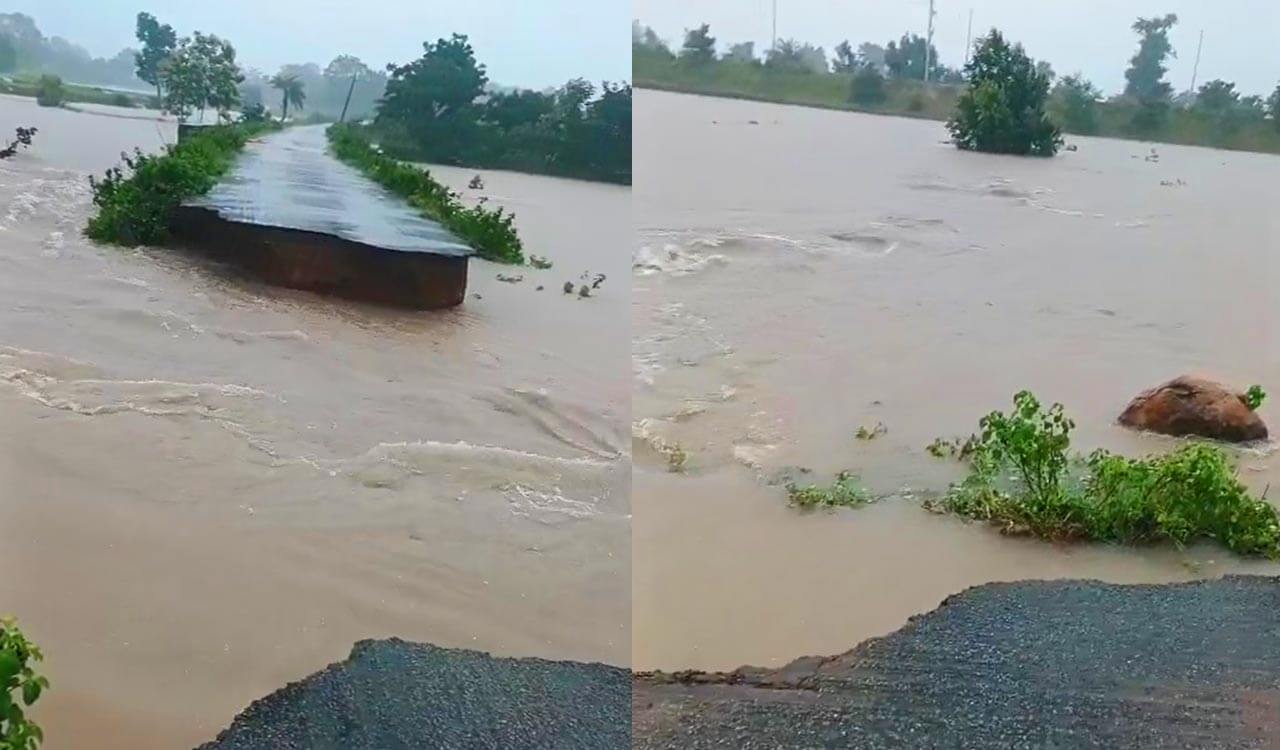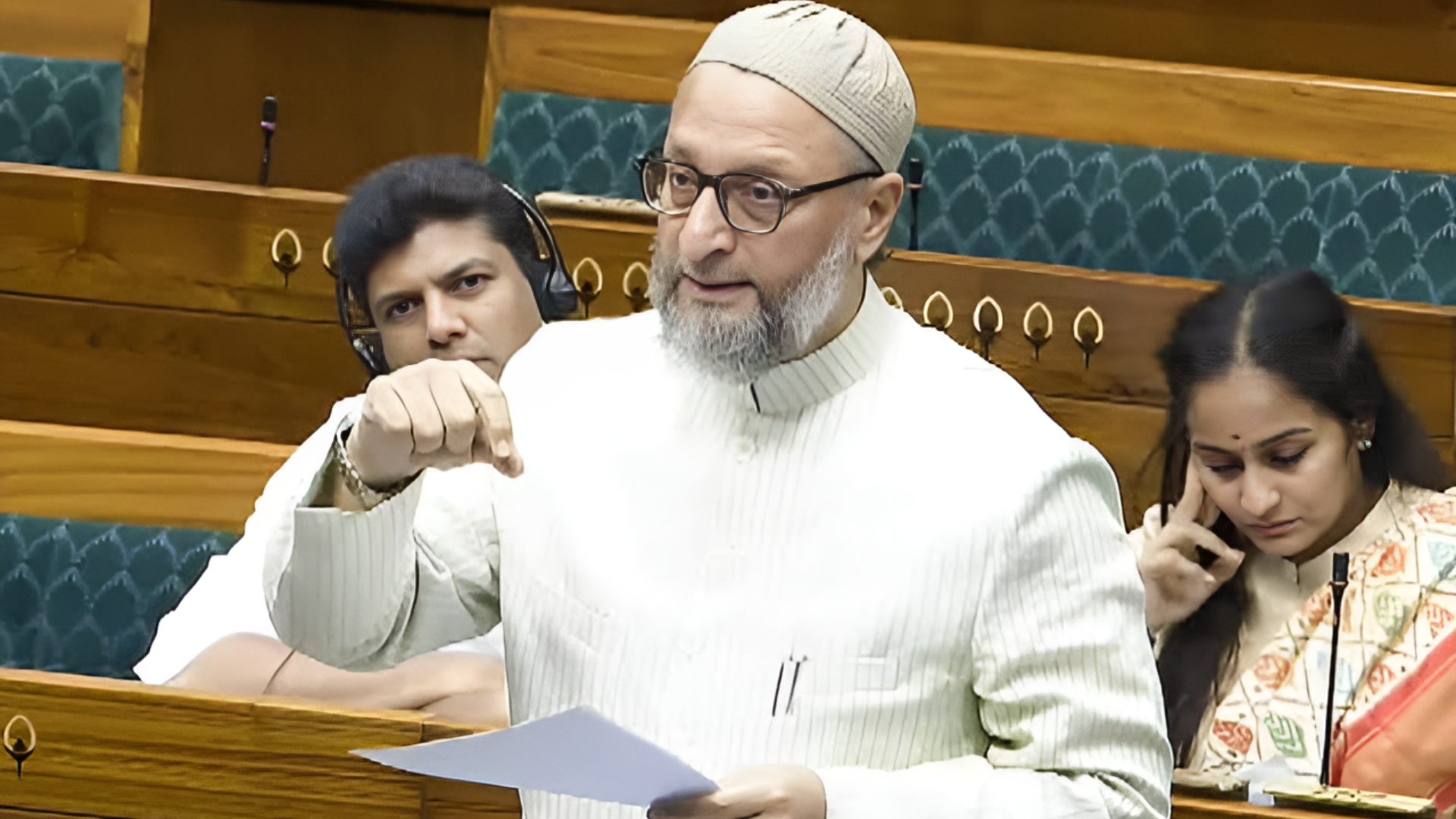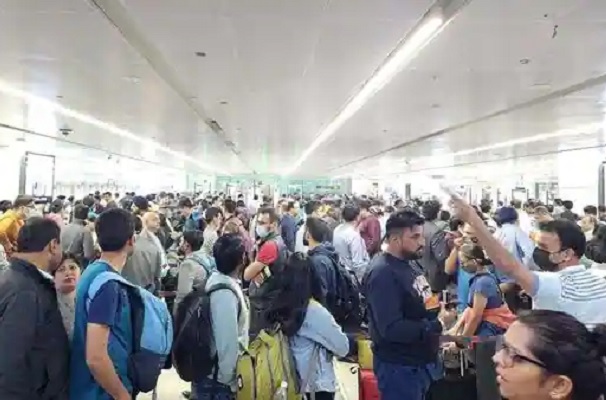Floods leave over 600 irrigation tanks damaged in Telangana
Wed 03 Sep 2025, 01:11:43

The recent heavy rainfall triggered by a low-pressure system over the Bay of Bengal has left a trail of destruction across Telangana, with Kamareddy, Adilabad, Sangareddy and several other districts bearing the brunt of the unprecedented showers from August 26 to 28.
Described as the heaviest in 50 years, the downpour severely impacted the State’s irrigation infrastructure, including more than 600 minor irrigation tanks, canals and other critical water management systems, according to sources.
The rains, which peaked on August 27, caused flash floods and overwhelmed irrigation systems, particularly in northern Telangana. In Kamareddy, over 10 percent of the 1,515 minor irrigation tanks either developed breaches or suffered partial damage, leaving nearby ayacut lands sandcast and causing further losses for farmers. In neighbouring Nizamabad, dozens of the 996 tanks were also affected, though to a lesser extent.
These tanks, crucial for irrigating paddy, maize and cotton, came under severe stress as rivers, streams and lakes overflowed, leading to breaches, erosion and inundation. Kamareddy, the epicentre of the flooding, saw Argonda in Rajampet mandal record a staggering 536.9 mm of rainfall in two days, with 418.3 mm falling in a single day on August 27. The deluge led to the overflow of major projects like the Pocharam and Nizam Sagar dams, as well as smaller structures such as the Bibipet irrigation tank. At least 16 tanks suffered extensive damage,
submerging villages and farmlands.
submerging villages and farmlands.
Overflow from Pedda Cheruvu and other local tanks flooded low-lying areas in Kamareddy, including Housing Board Colony and GR Colony. The Bibipet tank’s spill washed away a bridge, halting traffic on the Kamareddy–Bibipet road. At Nizam Sagar, which received inflows of 54,200 cusecs, officials were forced to release 43,286 cusecs into the Manjeera River, inundating downstream areas.
The century-old Pocharam project withstood inflows of 1.82 lakh cusecs against a capacity of 70,000 cusecs, but surrounding infrastructure such as roads and canals suffered severe damage. In Sangareddy and Medak, the Manjeera River’s overflow worsened the situation, with more than 50 tanks breached. Crops in over 16,000 acres were submerged, with sand deposits rendering fertile land unusable.
Across Telangana, preliminary assessments indicate that more than 2.2 lakh acres of crops—mainly paddy, cotton and maize—were damaged, with Kamareddy alone reporting 77,400 acres lost. In Adilabad, the swelling Swarna and Kadam rivers, tributaries of the Godavari, damaged canals and submerged villages like Bidrelli and Jam. The Irrigation and CAD Department reported widespread damage to tanks, canals and supporting infrastructure.
The Singur left bank canal in Medak suffered a breach, prompting urgent restoration work. In Adilabad, the swelling Kadam River caused erosion around irrigation structures, cutting off access to several mandals.
No Comments For This Post, Be first to write a Comment.
Most viewed from Hyderabad
Most viewed from World
AIMIM News
Latest Urdu News
Most Viewed
May 26, 2020
Who will win The 2025 ICC Women's Cricket World Cup?
Latest Videos View All
Like Us
Home
About Us
Advertise With Us
All Polls
Epaper Archives
Privacy Policy
Contact Us
Download Etemaad App
© 2025 Etemaad Daily News, All Rights Reserved.

.jpg)
.jpg)
.jpg)
.jpg)
.jpg)
.jpg)
.jpg)





.jpg)
.jpg)
.jpg)
.jpg)
.jpg)
.jpg)
.jpg)
.jpg)


.jpg)
.jpg)












.jpg)
.jpg)
.jpg)


